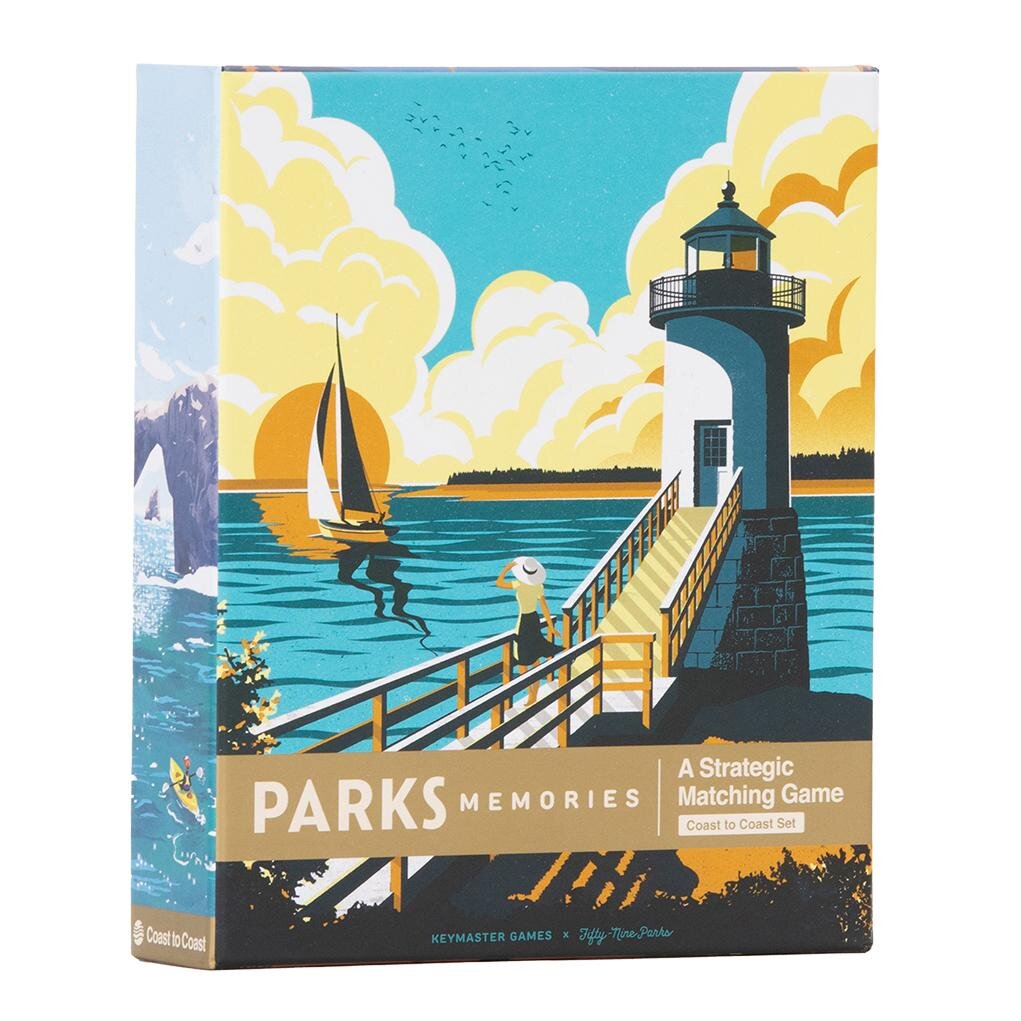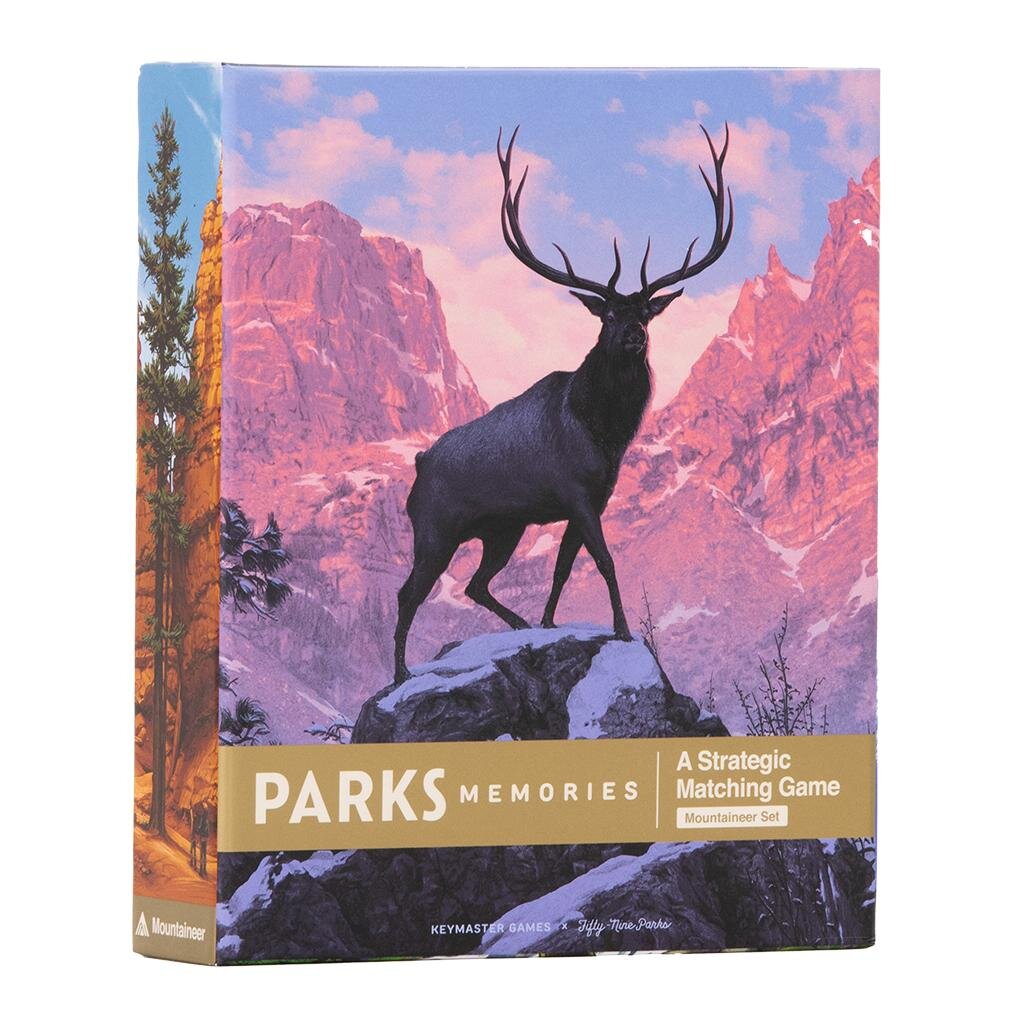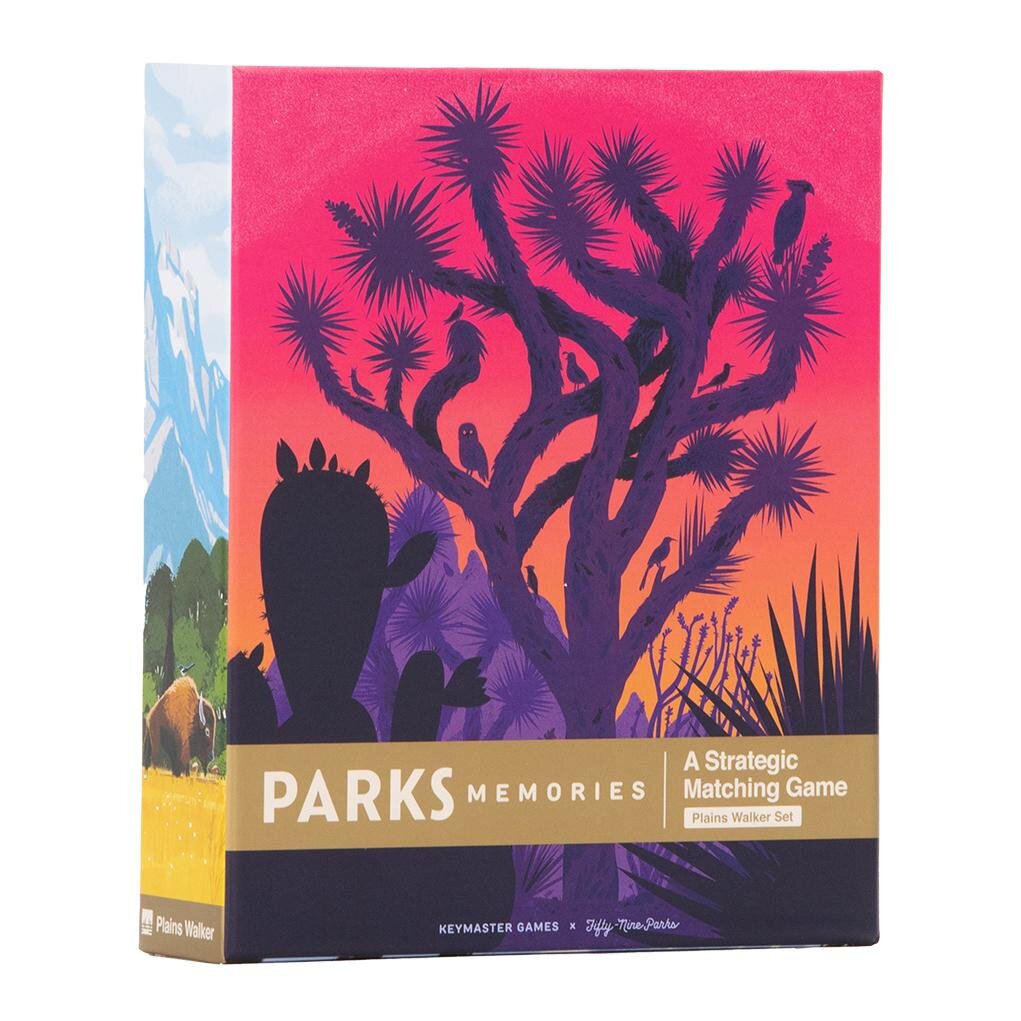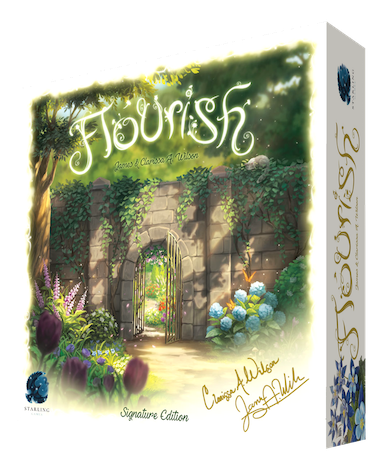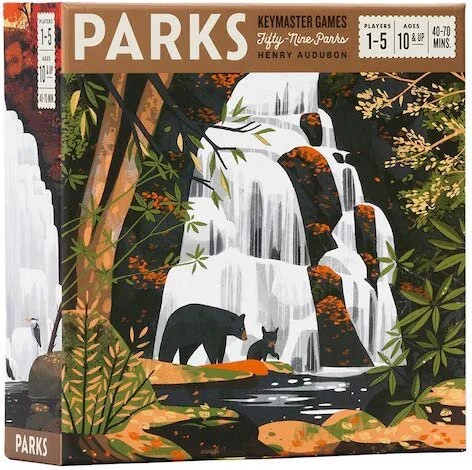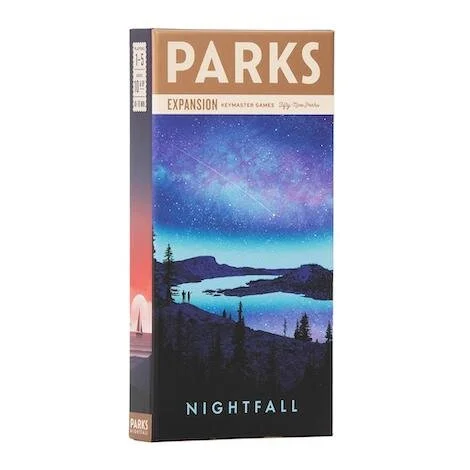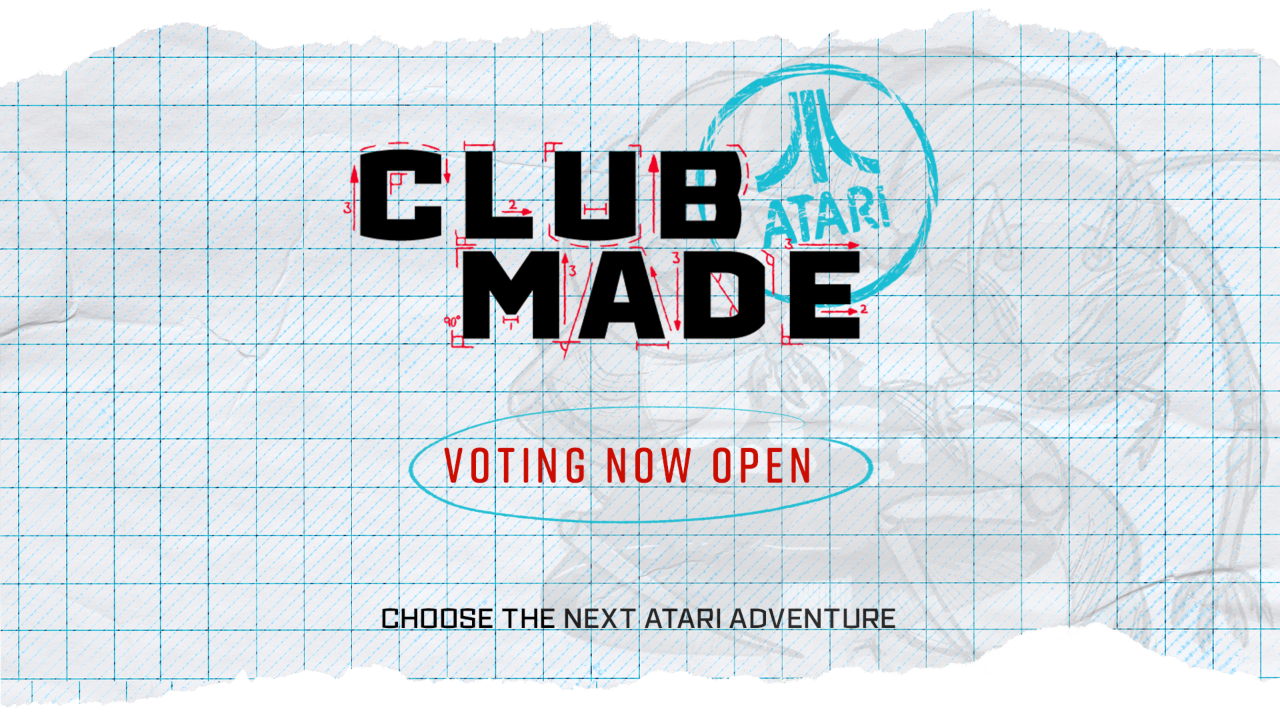Review copy provided by Keymaster Games
PARKS Memories takes the artistic wizardry of the PARKS board game and spins it into a matching and memory game that spans three different themes—Mountaineer, Coast to Coast, and Plainswalker. It’s a standalone experience that continues the beautiful aesthetic of the Fifty-Nine Parks Print Series while also giving another way for players to interact with the Keymaster Games tabletop series.
It debuted on Kickstarter alongside the Nightfall expansion to the original board game. And while Memories first appears to be a simple memory game, each set (or a combination of the three) provides more depth and strategy if you want. There are player abilities, locked tiles, and other mechanics that demand the players’ focus throughout the matching game. While it isn’t as big or long of an adventure as its predecessor, Memories offers another dive into a world of rapture and unforgettable illustrations.
Whether you’re playing with one set or all three, there is much to appreciate about this game. So let’s happily lose ourselves in the arid desert, by the lush coast, or on top of the mountains as we explore the world of PARKS Memories.
STORY
With the introduction of a memory game, the nature of the challenge and the layout of the components is immediately more abstract. More fractured. We lose some of the narrative and overarching theme when that happens. Players no longer act as relaxed hikers walking on the trail and encountering the wonders of the wild while on their trek. It’s not really a journey anymore.
I’d say that if you want the best PARKS adventure to draw you into the series, it wouldn’t be Memories because this feels more like a supplemental game to someone who already appreciates what Henry Audobon accomplished with the visual stunner from last year.
But I could also be wrong and many players might consider this the gateway game that brings family and friends into the bigger tabletop game. The light beer before the dark ale. The frozen margarita before the cocktail. Or, for the foodies out there, the free samples at Costco… when that was still a thing. You get the idea, though. It could be a smaller experience that leads to a bigger moment down the road.
For me, though, I missed the sense of place and progression that was in the original game and, while I normally wouldn’t compare two games when considering the presence and strength of the theme, the visual settings of these games depicted on the cards are so naturally connected that the comparison is hard to ignore.
GAMEPLAY
It takes no time at all to get started here.
You’ve got a 3x3 grid of Park tiles. And each player possesses four Abilities tokens to influence their gameplay. Turns consist of players revealing tiles, refreshing abilities when able, taking a tile, and locking another tile in the grid with the blocky and tactile Hiker wooden piece. Then players continue to alternate play until one has collected three matching Park tile pairs. That ends the game.
Super simple. Easy to teach. Breezy to play.
You can change up the structure of play with components from the other sets, but the basic gameplay doesn’t really change.
Being able to lock tiles with the Hiker felt good. Combining that limitation or blocking move with Ability tokens gave some interesting decisions for every turn. How could I get the tile I needed while interfering with the other players’ chance at acquiring a pair or stopping me from completing one of mine? How can I alter the state of the grid in order to confuse someone’s memory and give me the advantage?
And, always, how can I keep looking at these pretty tiles? That question never helped me win, but I couldn’t help asking it every now and then…
I have all three of the PARKS Memories sets, but if I were to just consider one of these sets, I would say that the gameplay is a little too light for me. It’s one part of a larger series and as such it lacks the substance and depth of a larger experience. Moving from PARKS to this is the wrong step for me. I need more strategy or possibility in my games and I don’t think I could get enough joy out of one box again and again. It needs more variety. It needs more content.
That’s a drawback for me. I think it’s beautiful. I think it’s light and inviting. But I don’t think it’s got the longevity I crave in my games.
It would, however, be a great game for kids who are learning to get into tabletop games. Also, I would recommend this as a way to introduce older family members and friends to board games. Its connection to classic memory games would be a good anchor to keep them engaged while also subtly familiarizing these gamers with more complex mechanics.
Depending on how you intend to play PARKS Memories, it could be a pleasant tabletop session or a more superficial jaunt through the board game world.
VISUALS
Looking at this art will not get old. Period.
The dozens of artists that were contracted to work on this series just did an outstanding job. Sometimes, it’s engrossing to the point of distracting as I was more interested in looking at the pictures more than I was in stopping my opponent from getting a matching pair of cards.
It doesn’t matter what you get, but you should definitely get something from Keymaster Games that features the illustrations from the Fifty-Nine Parks Print Series. Whether it’s the playing cards, or PARKS, or PARKS Memories. Just get one. Because the visual work here really lifts up the U.S. National Parks in a tremendous way. There are places I’ve never heard of. Views that I’ve never seen before. And all of those new visual treats are helping to make a list of future trips within the United States.
Few games really have the eye-catching looks that make you want to play the game no matter what the mechanics are. No matter how good or bad it is. PARKS Memories continues the trend of gorgeous gaming that started with the original board game. I really like looking at these tiles. And the other great components only enhance the experience.
REPLAYABILITY
One of the best decisions in the design process for PARKS Memories was to avoid the basic structure of a memory game. A game that revolved around flipping two similar tiles and keeping them is too basic to interest most gamers. I feel like the tabletop community has mostly moved beyond simplistic experiences like that. I mean, just go to any forum and wait for the dormant-but-always-present hate for Monopoly…
Now, if you want, you can always strip away the other mechanics and turn this into a basic matching and memory game. But the ordinary steps of the game involve more strategy and those enable more replayability. The addition of the other sets is the crucial inflection point that saves the game for me, though. Being able to change out the players’ abilities is handy as it can make the strategy in each game shift enough to make for a new experience. Combining the Park tiles into larger grids makes for a more challenging memory test and it gives players more versatility in their decision-making.
To take full advantage of the variability in PARKS Memories, you’ll need to grab all three sets. Keep that in mind before buying just one of these.
WHAT IT COULD HAVE DONE BETTER
I think I would have preferred that all three of these games be sold in one box. This is coming from a hobbyist tabletop gamer, though. For all of the people in the world that enjoy lighter fare or aren’t as enthusiastic about board games, this is probably a good option—to reduce the size and complexity of the package and give the buyer options.
But if you’re like me, then you’ll be slightly annoyed that you now have three boxes when you could have had one. And you might also be disappointed if you just bought one. I think of this as a package deal because the variability and replayability are at their highest when combining and mixing components from all three sets. That’s the only way I’d want to play in the long term.
Don’t get me wrong. Keymaster Games has done a marvelous job creating well-organized boxes that make set up and breakdown a cinch. I just don’t want a tower of smaller boxes cluttering the shelf whenever I could have one medium-size box. I’m not a collector. I cull my board game shelf semi-regularly to ensure that I’m not hoarding and to prioritize games that my family plays and loves. Therefore, games that take up unnecessary space are always in danger of being relegated to the re-gift and trade pile.
If you’ve got the space—or you don’t care about the clutter—then PARKS Memories won’t bother you unduly. I just wish that there was a version of this where it all came in one package. Because buying just one box would feel like buying one-third of a game.
One last thing that detracts from the value of the game—getting all three of the Memories sets would cost around $75, which is more than PARKS at $50. Something to consider.
VERDICT
If you really want to get the most out of this game, I’d recommend getting all three sets of the PARKS Memories series. Having all of the box sets will enable you to vary the gameplay with bigger tile grids, different abilities, and more complexity. It’s going to be the best version of Memories that you can create and it will endure on the shelf for longer.
For those just looking to enjoy the simple gameplay and riveting artwork, then one set may be enough to satisfy you. In that case, I’d recommend that you just get whichever set of artwork speaks to you more. They’re all beautiful, but you might have a preference.
Personally, I think that these games will always make me want to play PARKS, but there is enough substance here to experiment and have fun for a while. The idea of a 6x6 grid and a mix of player ability tiles excites me, so I’ll be trying that soon.
At the end of the day, PARKS Memories dazzles the player with memorable illustrations and teases them with a coy wink whenever the tiles flip facedown and you’re left wondering where that matching park tile was.



